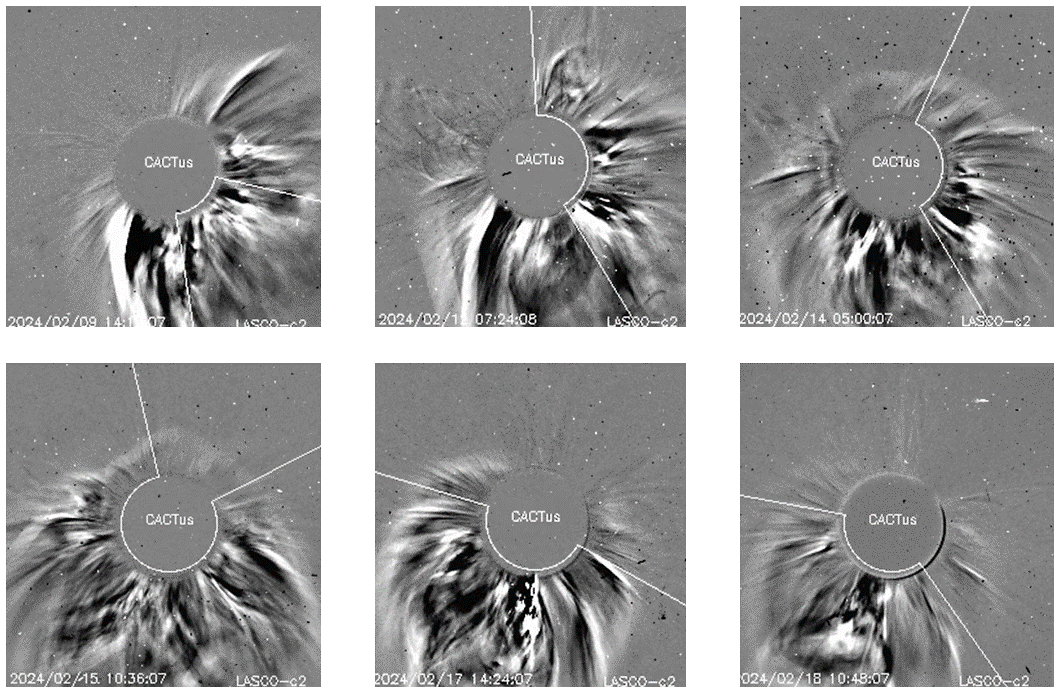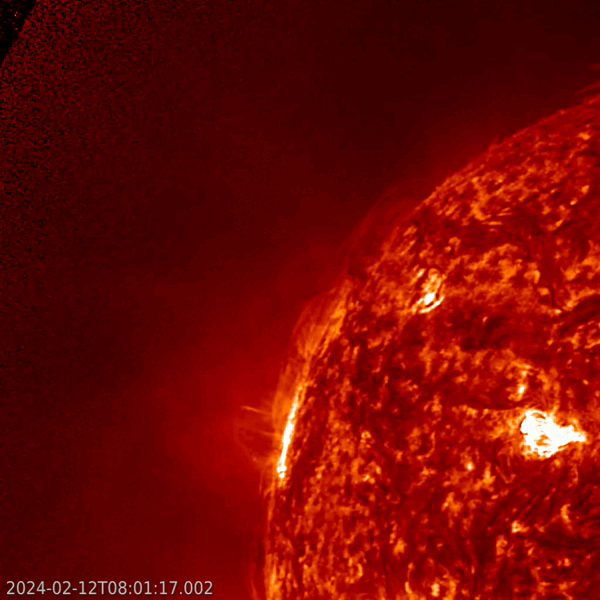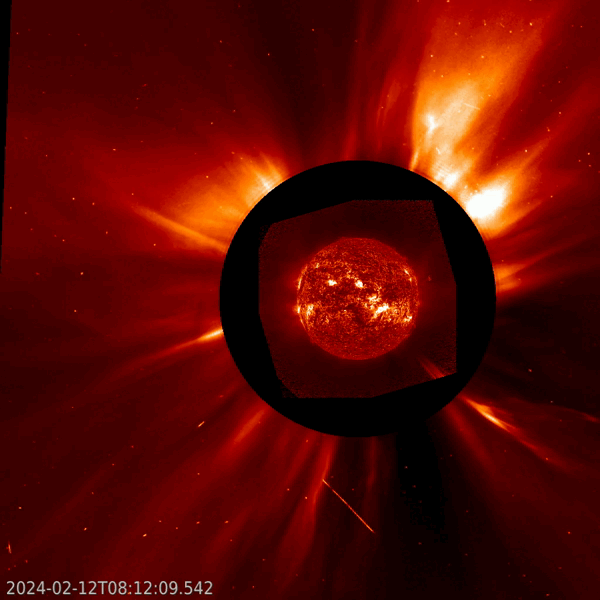The Sun completed another week of enhanced solar activity with an X2 flare on 16 February and several, mostly farside (partial) halo coronal mass ejections (CMEs - see CACTus). A majority of these farside eruptions are thought to originate from NOAA 3575. This complex region rotated over the southwest limb on 8 February, and was the source of an X3 flare a day later. This region was located at a high latitude of -37°, which may explain the asymmetry of the observed halo CMEs. The coronagraphic imagery underneath (SOHO/LASCO C2 images) show the most prominent CMEs thought to be associated with eruptions from NOAA 3575 during its farside transit, starting with the CME related to the X3 flare on 9 February, and further eruptions on 12, 14, 15, 17 and 18 February. One can really "track" NOAA 3575 just from these eruptions, and the region is expected to round the southeast limb on 21 or 22 February.

However, one of the most eye-pleasing eruptions took place on 12 February and was not related to NOAA 3575 activity. The event consisted of a prominence eruption near the northeast limb around noon on 12 February, followed by another eruption in a region a bit beyond the solar limb around 21:00 UTC on the same day. Solar prominences are clouds of charged particles ("plasma") above the solar surface squeezed between magnetic regions of opposite polarity. Being cooler and denser than the plasma underneath and their surroundings, they appear as bright blobs when seen near the solar limb and as dark lines when seen on the solar disk (then they are called "filaments"). Special filters are required to observe prominences. In extreme ultraviolet (EUV) passbands, they may appear as bright features in filters displaying "cold" temperatures such as GOES/SUVI 304 (around 80.000 degrees). In passbands displaying higher temperatures such as GOES/SUVI 171 (around 700.000 degrees), they appear as dark features. The images underneath show both eruptions in GOES/SUVI 304. The clips in SUVI 171 (left) and SUVI 094 (multi-million degrees) show other features such as post-eruption coronal loops and supra-arcade downflows ("SADs"). The prominence eruption seems to have been triggered by a C3.8 flare in a small active region NOAA 3585, which may have destabilized the magnetic structure holding the nearby prominence. The second eruption was associated with a long-duration M2.6 flare.

 |
 |
Both eruptions were associated with CMEs, shown in the SOHO/LASCO C2 images underneath. The CMEs had a plane-of-the-sky speed of resp. near 600 km/s and 1200 km/s, and no earth-directed component. The "noise" (white dots) in the images is due to energetic particles crashing onto the camera pixels. It is thought that these particles have their source in the strong farside event from NOAA 3575 earlier that day around 06:30 UTC, generating a moderate solar radiation storm.






